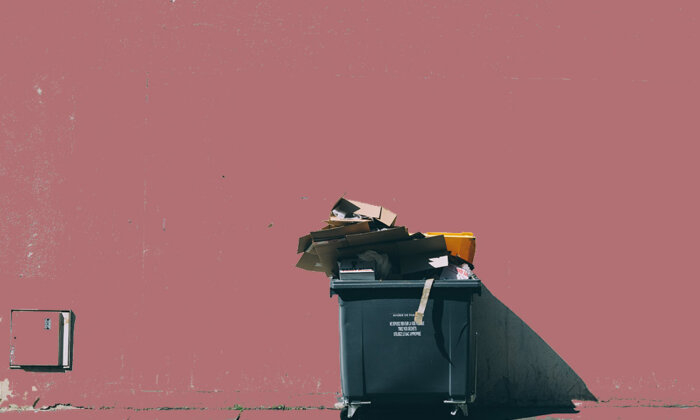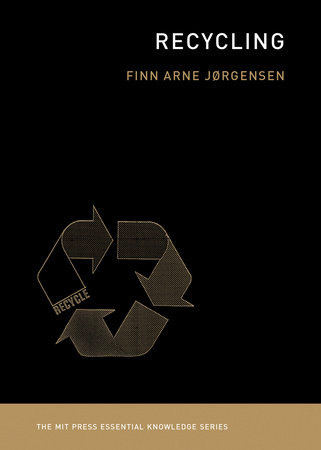Recycling Is Not Garbage

“Never doubt that a small group of thoughtful, committed citizens can change the world; indeed, it’s the only thing that ever has.” —Margaret Mead
“Recycling may be the most wasteful activity in modern America,” science journalist John Tierney declared 25 years ago in an infamous New York Times article: “a waste of time and money, a waste of human and natural resources.” In Tierney’s view — or at least his view at the time — the looming threat of the garbage crisis was overblown, an artificially produced crisis of meaning rather than a crisis of actual material things.
Recycling, Tierney believed, had more to do with alleviating guilt among consumers who wanted to do something for the environment; the act became atonement rather than effective environmental action.

This feeling of insufficiency is common among most who have thought critically about their own and others’ recycling habits. While recycling rates in the U.S. have increased from 6 percent in the 1960s to about 35 percent today — still low among industrialized countries — recycling is seen by many as a wholly symbolic action.
Business actors, meanwhile, have embraced recycling for a host of reasons, chief among them to shift responsibility for waste management onto individuals or the public sector. In doing so they also adopted the practice to serve a particular agenda.
Keep America Beautiful, for example, a non-profit which was established by a group of glass, aluminum, paper, and steel container manufacturers in 1953 to shift the burden of waste from producer to consumer, argued that people create waste and people can stop it, too. But what can a single individual person do in the face of the vast scale of the global waste stream? Can a person make a difference? How do we change the underlying way the world has ended up working?
Recycling is simultaneously highly symbolic and deeply material, and cannot be meaningfully reduced to either.
The American form of environmentalism through recycling has largely become centered on individual responsibility, whereas in other places, recycling is mandated as a corporate responsibility. Beverage container legislation reveals this strategy clearly: States and countries have introduced regulation and tax incentives to make bottlers either keep reusable bottles or design new return systems that ensure high recycling rates. While there has been some industry resistance to such legislation in most places, none fought it as fiercely — or successfully — as American industry.
The result is often a form of recycling that aims to maintain the status quo; at best, it tries to make the most of a situation where causes seem far beyond the individual’s reach, and at worst, it creates a distraction that deliberately diverts attention from underlying problems.
Recycling, however, is simultaneously highly symbolic and deeply material, an act that cannot be meaningfully reduced to either. Mirroring the waste stream it aims to extract value from, recycling is a blend of matter, politics, culture, and economics, among other things. Recycling tries to maintain a balance between hopefulness and cynicism, between environmental and economic considerations. It uncomfortably straddles the individual and the infrastructural.
In my book “Recycling,” I advocate following the materials of recycling as a way of seeing the complexity of the phenomenon. By following recycling in such a way, we can see the extent of the human footprint on earth. The world as we understand it has gotten more complex since the 1970s. In the Anthropocene, where humans have set their imprint on planet Earth down to the geological record, there is no “away” to send material to. We can follow the traces and materials of human activity to every corner of the Earth, from the highest strata of the atmosphere to the deepest oceans.
Historically, recycling has followed a clear trajectory from overcoming scarcity to dealing with abundance. With scarcity, recycling established a direct link, where the cause and effect of one’s actions were clear. It had an immediate impact on one’s own life. That is not the case in a world of abundant materials and disposables. In its contemporary form, recycling can be seen as an attempt to make the world more sustainable after the fact of overconsumption. It should be clear by now that recycling won’t save the world. Let’s just get that out of the way. No one single thing will.
The global waste problem that recycling aims to address can be called a “wicked problem.” This term comes from design theorists Horst Rittel and Melvin Webber, who identified a series of characteristics of such “ill-defined” problems that “rely upon elusive political judgment for resolution.” Wicked problems can never really be solved, only resolved, again and again. They are unruly and muddle any attempt at defining and clarifying the parameters. There is no simple way of knowing when the problem is fully resolved, because wicked problems are also symptoms of other problems. Actual solutions require radically different societies, overthrowing the status quo.
It should be clear by now that recycling won’t save the world. Let’s just get that out of the way. No one single thing will.
There is no doubt that a connection exists between the aluminum can in my hand and the global environmental challenges out there, beyond the household, but connecting the dots and creating action at the individual level that has an actual impact at planetary levels is not easy. Recycling alone cannot resolve such a wicked problem; it can at best nibble away at some of the symptoms of a consumption society. But recycling can also be a way of engaging with the problem, of recognizing and considering the complexity of the situation.
I believe that many people actually want to do what is best for the environment — or at least something that is good — and the problem is not that we lack knowledge about environmental problems. Rather, people don’t know how to translate this knowledge into concrete and meaningful actions. The sudden ascendancy of recycling as an environmental action from the 1970s onward can be seen as a response to this desire. It also explains the rapid adoption of recycling as a business strategy, for good and for bad.
Recycling’s most significant potential is to make waste and its consequences visible. Over time, the large-scale technological systems that make it work have become invisible to most of its users. For them, recycling stops at the collection point; afterwards it is somebody else’s problem. The writer Douglas Adams famously described this as “something we can’t see, or don’t see, or our brain doesn’t let us see, because we think that it’s somebody else’s problem.” But recycling doesn’t have to be someone else’s problem. Recycling can instill a particular form of what I call wastemindedness in its practitioners. The phrase “Out of sight, out of mind” has become a truism in waste management, but the converse is also true: waste in sight, waste in mind.
Recycling can also be a lesson in the art of attention, of noticing the many and diverse relationships between humans and waste. We can begin to ask ourselves questions: How does waste enter my household? What materials are used in the products I use and discard? Where do they come from? Where do they go once they leave my household? What can be reduced? What can be substituted with other materials? This is a form of ethnographic fieldwork, of understanding the world we live in — and ultimately, of overcoming alienation created through the disconnect between everyday lives and global processes. It is critical that this attention does not limit itself to the boundaries of the household.
Recycling can be a lesson in the art of attention, of noticing the many and diverse relationships between humans and waste.
Leaving recycling entirely to the market and its assessment of value would be a mistake. As we know from countless examples, the market excels at generating economic value through externalizing costs, and many solutions that look cheaper or more profitable may only be so because of that. It may be cheaper to make virgin glass, but only because we don’t include the environmental costs of mining sand and producing new glass (also, the world is running out of sand, believe it or not). It may be cheaper to send waste to China for processing and recycling, but that does not take into account the emissions involved in transporting the waste across the planet, or the human costs for the people who have to do the actual processing and deal with the left-behind pollution.
If recycling is political, we could see recycling as citizenship, not as redemption. It is a starting point, not a goal. As with voting, it is utterly pointless as a solely individual thing. One doesn’t matter, but many ones do, assuming they happen within a system that can harness and coordinate the individual actions. Recycling is not a panacea that will solve all environmental problems in the world. It might be the case that the feeling of doing something for the environment by recycling is enough to keep many from making more drastic lifestyle changes; it could equally well be that recycling makes environmental values actionable and inspires further action for many.
Tierney ends his critique of recycling on an allegorical note. In referring to John Bunyan’s “Pilgrim’s Progress” and the appearance of a muckraker too busy taking care of his compost pile, Tierney writes, “His recycling has become the most primitive form of materialism: the worship of materials.” Rather than worship, let us instead aim for attention and care for the materials that pass through our lives. Let us aim for wastemindedness. Recycling may be an imperfect solution for an imperfect world, but it is no less valuable as a point of potential environmental engagement.
Finn Arne Jørgensen is professor of environmental history at the University of Stavanger, Norway. He is the author of “Recycling,” from which this article is adapted.



